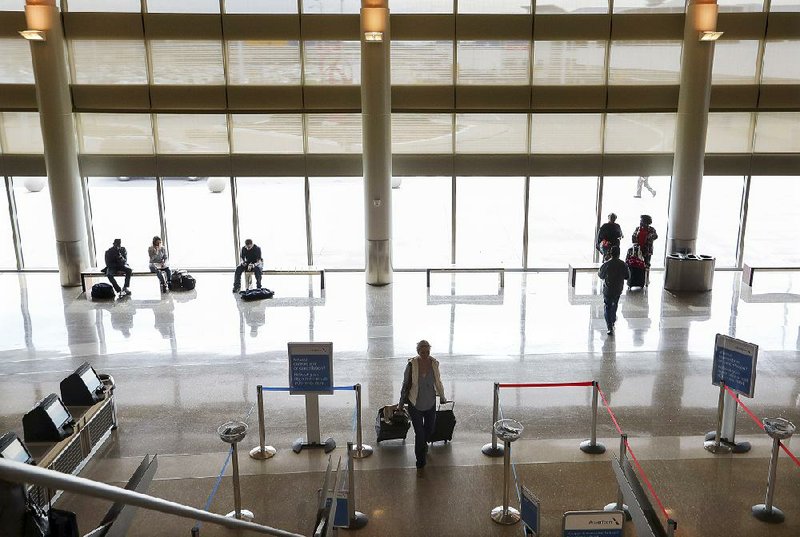LITTLE ROCK -- The state's largest airport's proposed operating budget for 2021 is the smallest in more than 10 years, thanks to the prospect of the coronavirus pandemic' impact on airline travel lingering well into 2021.
Bill and Hillary Clinton National Airport's proposed operating budget for next year is $24,375,279, a 33% drop from the $36,756,938 proposed for 2020 and adopted well before global passenger traffic collapsed with the pandemic in March.
The last time the proposed annual operating budget was smaller was 2010 when it was $23,597,400, David Tipton, the airport's finance director and chief financial officer, said in an email.
The airport expects to finish this year with an operating budget of $23.9 million.
But even as revenue collapsed this year, the airport still has taken in more than $20 million through Oct. 31. At the same time, its expenses totaled about $17 million.
John Rutledge, chairman of the Little Rock Municipal Airport's finance committee, praised the financial acumen of airport staff, noting that the $3 million the airport has left after expenses so far is in addition to $25.1 million for the airport allotted under the Coronavirus Aid, Relief, and Economic Security Act, a $2 trillion federal relief package designed to help offset the economic impact of the pandemic.
"To go through covid in an industry that was one of the toughest hit in the country and to still have a positive cash flow of $3 million through 10 months of the year, I think that is because you guys do a great job of managing what you have," he said. "That's a reflection of leadership and management oversight over the last several years."
The proposed 2021 operating budget projects $25.5 million in operating expenses, leaving the airport with a $1.1 million operating deficit.
Non-operating revenue is expected to total $32.5 million. That money includes its dedicated federal grants totaling about $4 million and about $10.2 million in CARES Act money it anticipates using to shore up the budget. The balance is discretionary federal grants Clinton National sought and expects to receive for major projects, including the reconstruction of some of its taxiways.
Driving the smaller budget is the collapse in passenger traffic. In 2019, Clinton National saw more than 2 million passengers arrive and depart. The airport expects to see less than 1 million this year, Bryan Malinowski, the airport's top executive, said.
In 2021, about 1.3 million passengers are expected to go through Clinton National, he said.
"We're doing far better than our peer airports because we have no debt," said Malinowski, noting that many airports have already exhausted their CARES Act money. "They are looking at some significant austerity measures going into 2021, especially in the staffing areas."
The airport staff recommend no change in the the landing fees and terminal rents it charges the airlines in 2021 and wants to double the discretionary credit it provides the airlines -- to slightly more than $6 million -- to keep the rates competitive with other airports, Malinowski said. CARES Act money will be used, he said.
